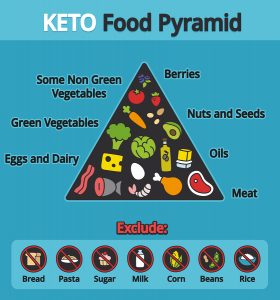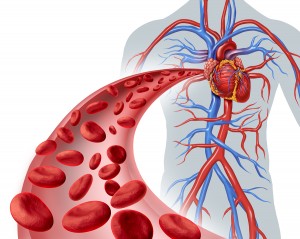Dr. Jeff Volek, PhD, RD gave a talk that clarified the benefits of the ketogenic diet. He is a professor at the Department of Human Sciences at The Ohio State University, Columbus, OH, and teaches in the Kinesiology Program. His lecture was part of the 24th Annual World Conference on Anti-Aging Medicine in Las Vegas, Dec. 9 to 11, 2016.
There were 58 slides, some of them very detailed. I will summarize as best as I can what the presentation was all about.
History of diets
Dr. Volek stated that there were unintended consequences when the low fat/ high carb diet was introduced in the 1970’s and 1980’s. Ancel Keys, a physiologist had proposed in his diet heart hypothesis that saturated fat was the culprit that caused heart attacks.
As a result all major health agencies recommended the low fat/high carb diet. Obesity, diabetes, heart attacks, and strokes were the consequences. Another offshoot later from this was the statin craze where everybody was put on statins as high cholesterol was symptomatically treated. Nothing changed the diabetes and obesity wave and heart attacks and strokes continued to kill the affected persons. Among performance athletes the hypothesis was formed that carb loading would increase muscle performance. Researchers showed evidence that carb loading would improve performance. But athletes were dissatisfied with prediabetes and metabolic problems. Both the average consumer as well as the performance athlete noted that they felt better on a low carb/high fat diet. This is what the ketogenic diet is all about.
Diet heart hypothesis
With the diet heart hypothesis the saturated fat was removed from the diet and replaced by vegetable oils rich in linoleic acid. Dr. Volek explained that blood tests and other investigations were done on people who ingested the low saturated fat/high carb diet. The question was whether this would reduce heart attack rates and deaths by lowering serum cholesterol.
The Minnesota Coronary Experiment was a double blind study, which answered this question.
Cholesterol was reduced in the experimental group. But there was no reduction of heart attacks or strokes compared to a control group. Of concern was the large amount of refined carbohydrate content with the low fat diet. This essentially was responsible for the obesity and diabetes wave. The excess sugar turned into fat deposits and to insulin resistance, which caused diabetes. The low saturated fat/high carb diet of the 1960’s to 1990’s did not reduce heart attacks and strokes. To the contrary: the obesity/type 2 diabetes wave it had caused increased mortality from strokes and heart attacks further.
Laboratory tests on low fat/high carb diet versus the ketogenic diet
Forget hypotheses for a moment. Let us review what the different diets do in terms of lab tests. In a study where physicians put 40 overweight people with metabolic syndrome on a low fat diet or a low carb/ketogenic diet, they received the following blood test results. There were 20 patients in each group.
-
Low fat/high carb diet
Triglycerides in the blood went down by 20%, saturated fatty acids by 22%. LDL (the bad cholesterol) rose by 4%. Insulin levels went down by 17% and leptin levels also down by 17%. Glucose levels were down by 1%.
-
Low carb/ketogenic diet
Triglycerides went down by 52%, saturated fatty acids by 57%. LDL (the bad cholesterol) went down by 18%. Insulin levels went down by 49% and leptin levels by 42%. Glucose levels were down by 11%.
In this group of 20 subjects for each group the body mass index went down by 5% for the low fat diet and by 10% for the ketogenic diet after 3 months. The abdominal fat went down in that time by 12% for the low fat diet and by 20% for the ketogenic diet. The conclusion from these laboratory results and from the body measurements is that the low fat diet is showing some results of weight loss, but the ketogenic diet has superior results. The same is true for the blood tests. Only the ketogenic diet showed reduction of 7 key anti-inflammatory markers. In contrast, the low fat diet did not trigger the production of a single anti-inflammatory marker.
Anti-inflammatory benefits of the ketogenic diet
A 2008 study showed that several anti-inflammatory markers were greatly reduced from the ketogenic diet while a low fat diet did not show such a reduction.
As this 2009 study showed the LDL particles were getting bigger under the influence of a ketogenic diet, but they were getting smaller with a low fat diet.
Large LDL particles are also called pattern A particles, while small LDL particles are also called pattern B particles.
As this link shows there is good evidence that small LDL particles oxidize easier and are more atherogenic (causing hardening of the arteries). This means they lead to hardening of the arteries easier translating into heart attacks and strokes down the road. It is one thing that a ketogenic diet leads to larger LDL particles, which are more resistant to oxygenation. But it is another good thing that this diet is also anti-inflammatory. Overall this means that a ketogenic diet is counteracting the development of heart attacks and strokes.
Are saturated fatty acids in the diet causing heart attacks or strokes?
Dr. Volek discussed several large studies that have investigated this question. One of these studies discussed was a metaanalysis from 2010. Like all the other studies it showed that saturated fatty acids do not cause heart attacks and strokes. This is the secret behind the Inuit and the Eskimo diet. It is a high fat and meat diet. There is lots of seafood on the menu as well, which provides omega-3 fatty acids.
Dr. Volek pointed out that if you replace a certain percentage, let’s say 5% of saturated fatty acids with carbohydrates, this would cause 7% more heart attacks. He showed literature evidence to back this up. What causes increased heart attacks and strokes is more refined carbs in your diet (sugar and starchy foods!).
Do saturated fatty acids in your blood increase the risk for disease?
Dr. Volek showed several slides with references to various publications. Elevated saturated fatty acids in the blood cause a higher risk of getting a heart attack, heart failure, metabolic syndrome and diabetes. But this does not happen with a ketogenic diet. The values of the saturated fatty acids in the blood are 4% lower with the start of a ketogenic diet. With a low carb diet the calories derived from carbs are 12%. In comparison a low fat diet has 56% of carbs. Protein content in the low fat diet is 20%, in the ketogenic diet 28%. Saturated fat content in the low fat diet is 24%, in the ketogenic diet it is 59%.
Comparison of saturated fatty acid diet with the ketogenic diet
Let’s assume that both diets remain at 1500 Cal. per day. Then the saturated fat content for the low fat diet is 12 grams and the carbohydrate content is 208 grams. For the ketogenic diet these values are as follows: 36 grams of saturated fat and 45 grams of carbohydrates. Although there was a threefold higher saturated fatty acid intake, measurements of the circulating level of saturated fatty acids were 4% lower.
You are what you eat, but go easy on carbs
Dr. Volek pointed out that what makes you healthy or sick is how many carbs you include in your diet. If you follow a ketogenic diet with only 12% carbs you are much better off than when you follow a diet like the low fat diet with 56% of carbs. The higher the carb percentage in your food, the higher the production of saturated fatty acids in your system and the higher the storage of saturated fatty acids in your body fat. Conversely, the lower the carb percentage in your food is the higher the oxidation of saturated fatty acids will be.
Low fat diet compared to ketogenic diet
In other words the saturated fatty acids disappear from your blood. Also, with a ketogenic diet the storage of saturated fatty acids is lower in your body fat. With a low fat diet your insulin resistance increases, while with a ketogenic diet insulin resistance decreases. The difference in calories in these two diets (56% derived from carbs in a low fat diet versus 12% derived from carbs in a ketogenic diet) explains why the obesity/type 2 diabetes wave has developed and why heart attacks and strokes still top the mortality figures today.
Endurance athletes win medals on a ketogenic diet
Dr. Volek shared a few cases of world-class athletes that are on a ketogenic diet. They did well for themselves winning medals. Tim Olsen won the Western States 100-mile endurance run from Squaw Valley to Auburn, CA in 2012. Zach Bitter was the 100-mile track record holder in 2015. Mike Morton won the American 24-hour distance running record for 172 miles. Two Tour De France bicyclists made first and second place, Chris Froome (first place) and Romain Bardet (second place).
Sports teams also have been successful on a ketogenic diet: the Columbus Crew soccer team; New Zealand national rugby union team, commonly called the All Blacks; the Los Angeles Lakers basketball team are all on ketogenic diets.
Dr. Volek also pointed out that the military has tested the ketogenic diet. A ketogenic diet restores metabolic health, gives the soldiers more endurance, more stress resistance and decreased fatigue.
Conclusion
A ketogenic diet is on the one end of the carb spectrum with only 10 to 12% of calories derived from carbs. At the other end is the low fat/high carb diet that caused the obesity/diabetes wave. The Mediterranean diet is in the center. The more you are able to cut down the carb percentage in your diet by cutting out sugar and starchy foods, the more your metabolism stabilizes and blood tests can be measure this. The ketogenic diet makes you lose weight down to your ideal weight and makes you gain more muscle strength and physical endurance. Sophisticated blood tests have shown that inflammatory markers go down on a ketogenic diet and factors that lead to hardening of arteries also go down.
The end result of being on a ketogenic diet
The end result on the ketogenic diet is that the rate of heart attacks and strokes goes down, something which was the original goal of Ancel Keys. It did not work, but it promoted a wave of diabetes and heart disease! Ironically adding saturated fat and other healthy fats while cutting down carbs will achieve disease prevention. This is the opposite of what Ancel Keys had recommended to do and what the processed food industry has mimicked. The ketogenic diet lowers mortality by cutting down heart attacks and strokes. With this knowledge it will finally be possible to get people on a path to better health.
More information about ketogenic diet: https://www.dietdoctor.com/low-carb/keto















